Buenos Aires doesn’t just borrow from Europe — it reinvents it. The grand avenues, wrought-iron balconies, and neoclassical facades might remind you of Paris, but the energy is something else entirely. There’s movement everywhere — conversations spilling onto sidewalks, late-night tango in dimly lit halls, the smell of grilled meat hanging in the air.
It’s a city that rewards curiosity, where the best moments aren’t always the obvious ones.
The comparisons to Paris make sense — Buenos Aires was designed with French aesthetics in mind. Stately buildings line leafy boulevards, and cafés anchor street corners with their pastries and small metal tables.
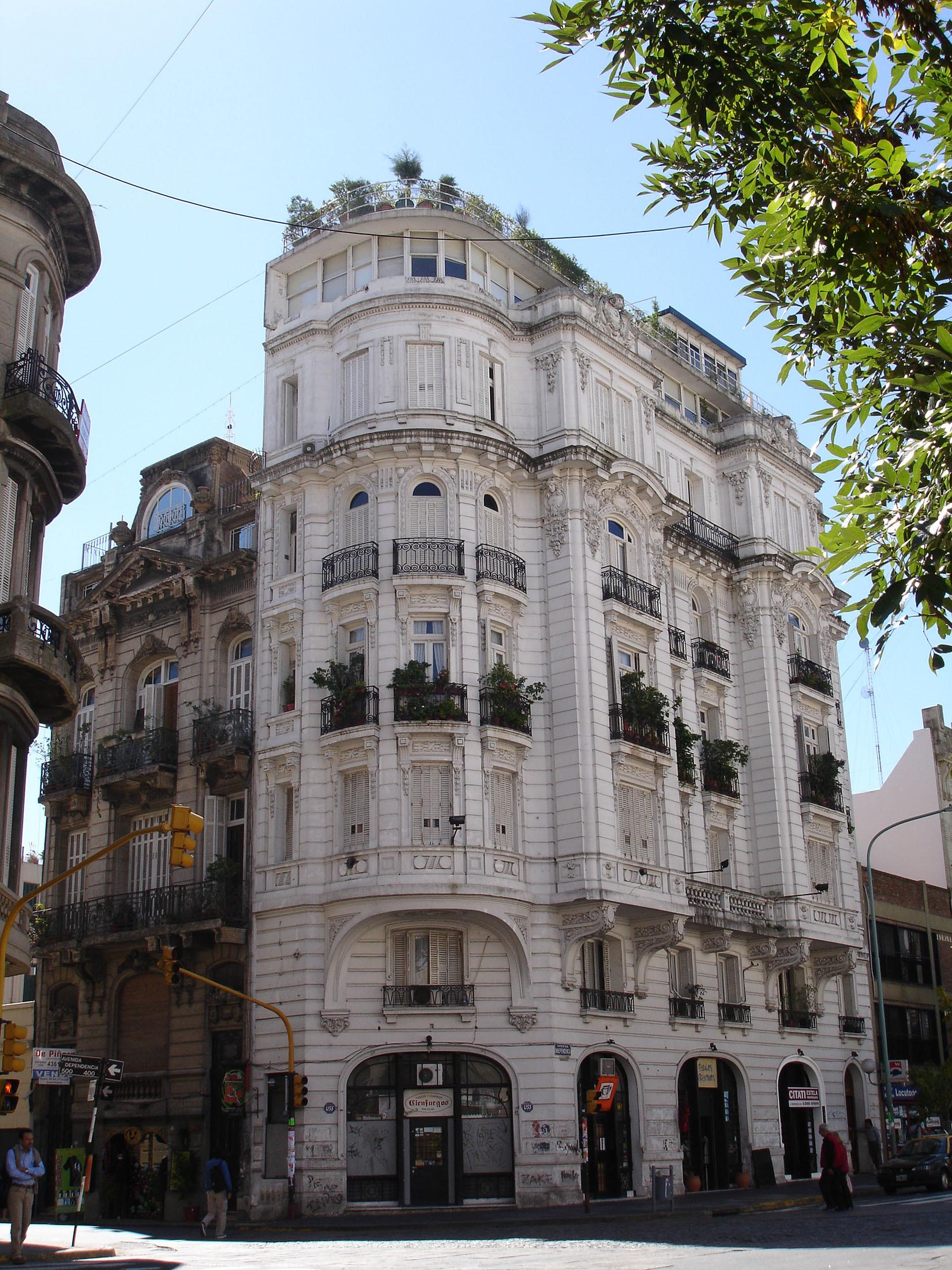
But architecture is where the similarities end.
Buenos Aires moves differently. It’s louder, later, and always shifting. There’s no rush to clear a table, no urgency to be anywhere. The city belongs to those who take their time with it.
I learned that quickly when I arrived.
At first, I wanted to tick off the landmarks — the Casa Rosada, La Boca, the tango shows. But the real Buenos Aires wasn’t in an itinerary. It was in the long meals, the unexpected conversations, the rhythm of the streets.
It’s why this Buenos Aires travel guide is less about must-sees and more about how to experience the city. Whether you're here for the architecture, the food, or just to wander, these are the best things to do in Buenos Aires to make the most of your time.
Disclosure: This article contains affiliate links. If you make a purchase through these links, I may earn a small commission at no extra cost to you. Thank you for supporting my blog!
Vibrant Things to Do in Buenos Aires
Buenos Aires isn’t a city to rush through. The best experiences come from lingering — sitting in a café or park for hours, watching a street performance in San Telmo, or getting lost in a conversation with a stranger.
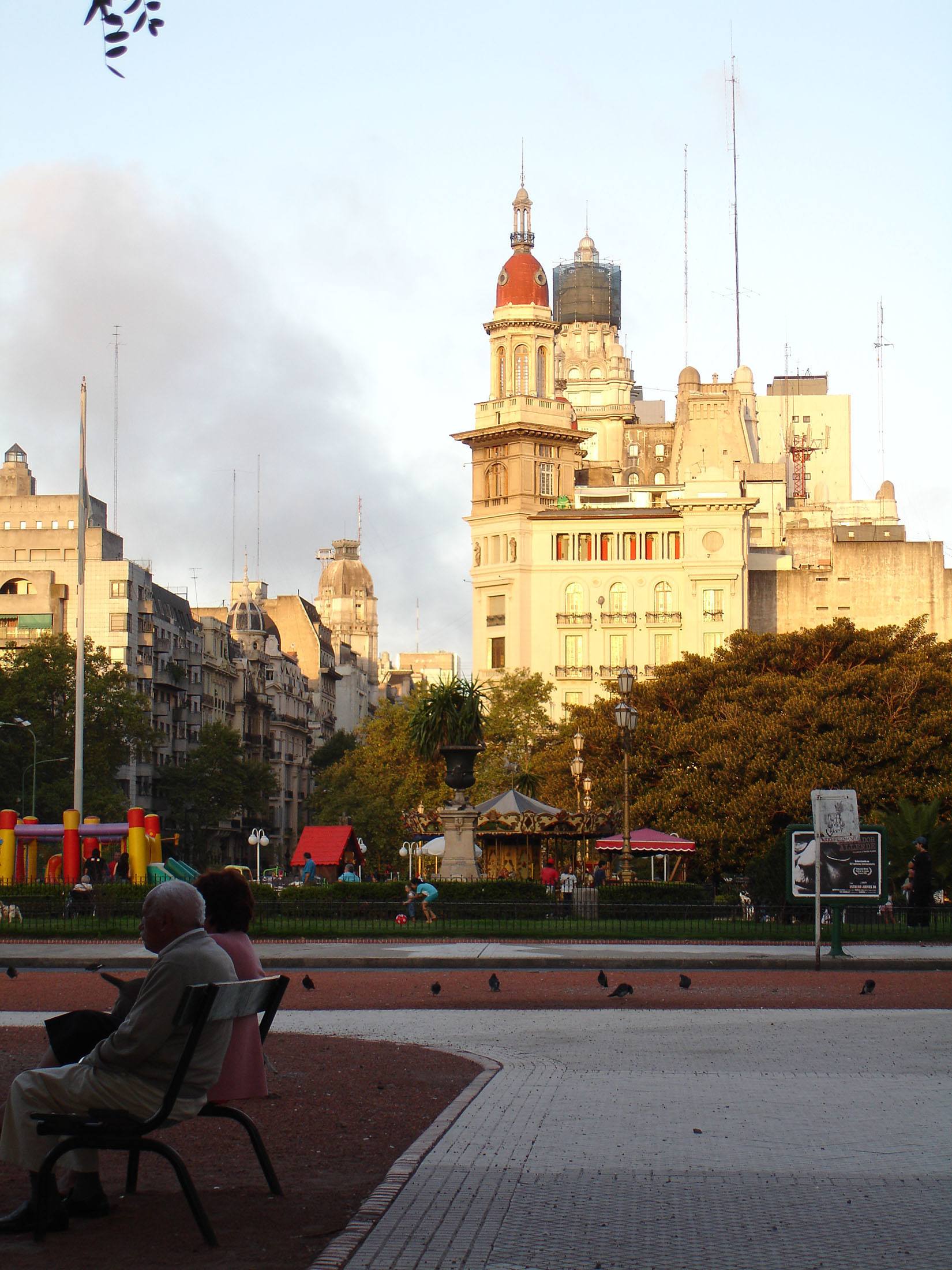
Whether it’s the rhythm of a milonga, the sizzle of a steak on a parrilla, or the quiet beauty of a park in Palermo, the magic of Buenos Aires isn’t just in what you see, but how you experience it.
Here’s how to do it.
1. Explore the Historic Landmarks
History in Buenos Aires is alive in the streets, the architecture, and the stories people tell.
Instead of just passing through, take the time to notice the details, the layers of history, and how these places still shape the city today.
Plaza de Mayo & Casa Rosada
Plaza de Mayo is the backdrop of Argentina’s most defining moments. Protesters gather here, just as they did decades ago. The Casa Rosada, the iconic pink government palace, is where Eva Perón, known affectionately as Evita, addressed the crowds that adored her.
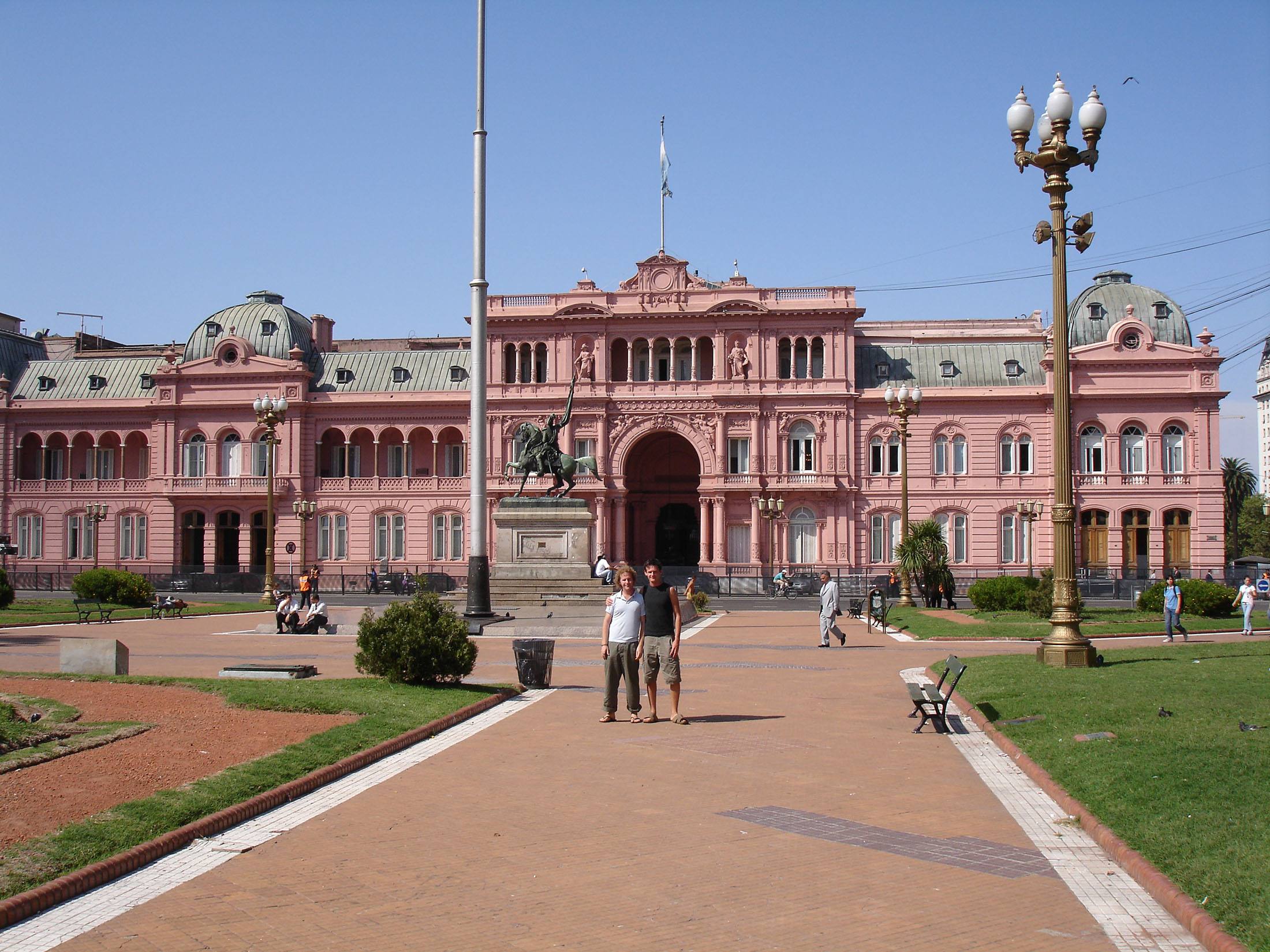
Evita was the First Lady and a force. She fought for the descamisados, the working class, and became a symbol of hope for millions. Even after her death in the mid-20th century, her presence in Argentina remained as powerful as ever.
The words “Don’t cry for me, Argentina,” popularised in the musical Evita, capture the depth of her influence. In many ways, she was Argentina’s Diana — her death left a nation in mourning, and her legacy refuses to fade.
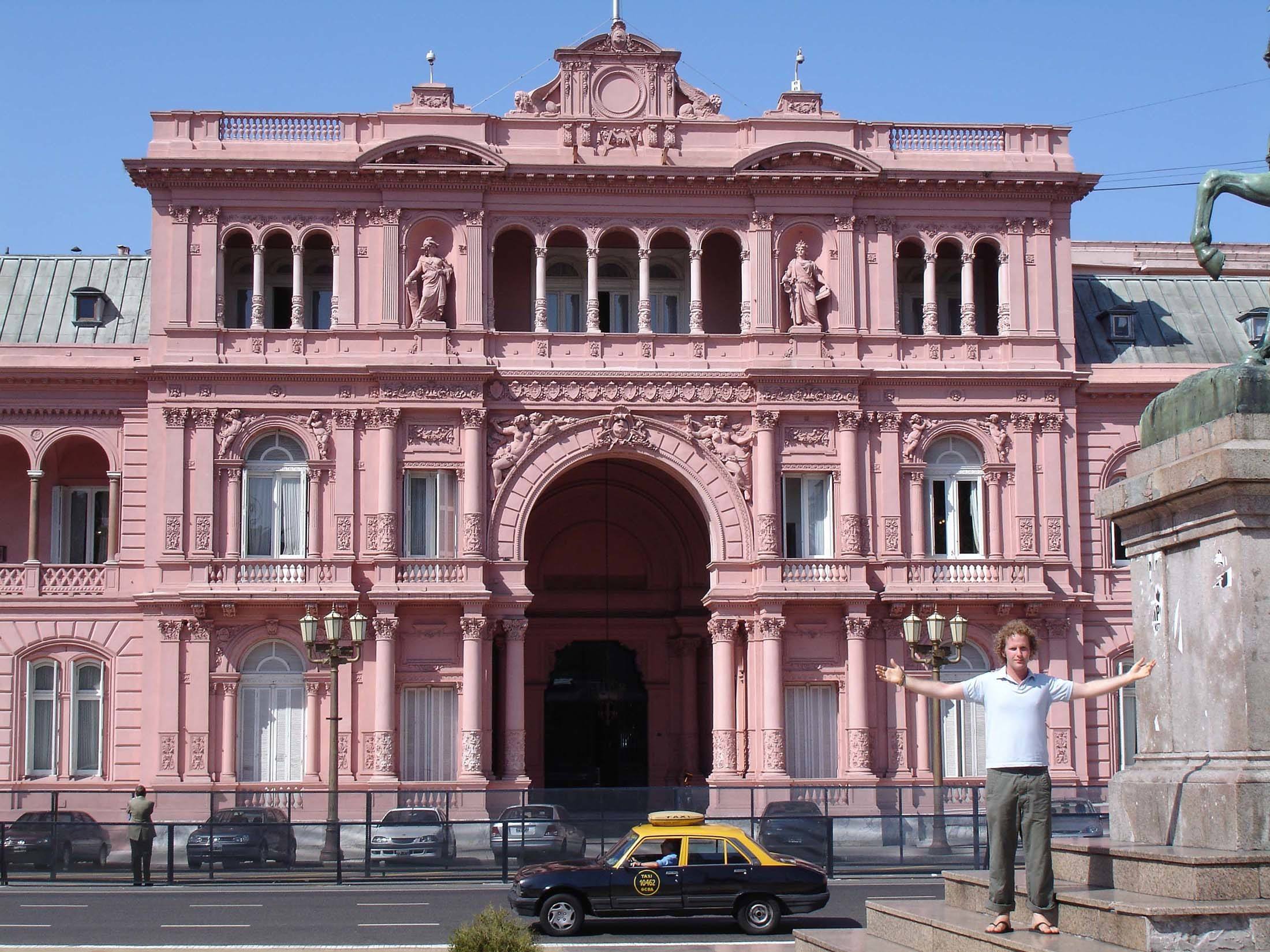
Standing in Plaza de Mayo, looking up at the Casa Rosada, it was easy for me to imagine the energy of those moments when she spoke from the balcony, promising a better future.
Recoleta Cemetery
Some cemeteries feel like places of mourning. Recoleta feels like a monument to memory. Walking through its narrow pathways, past towering mausoleums and intricate sculptures, you start to see why it’s one of the most visited sites in Buenos Aires.
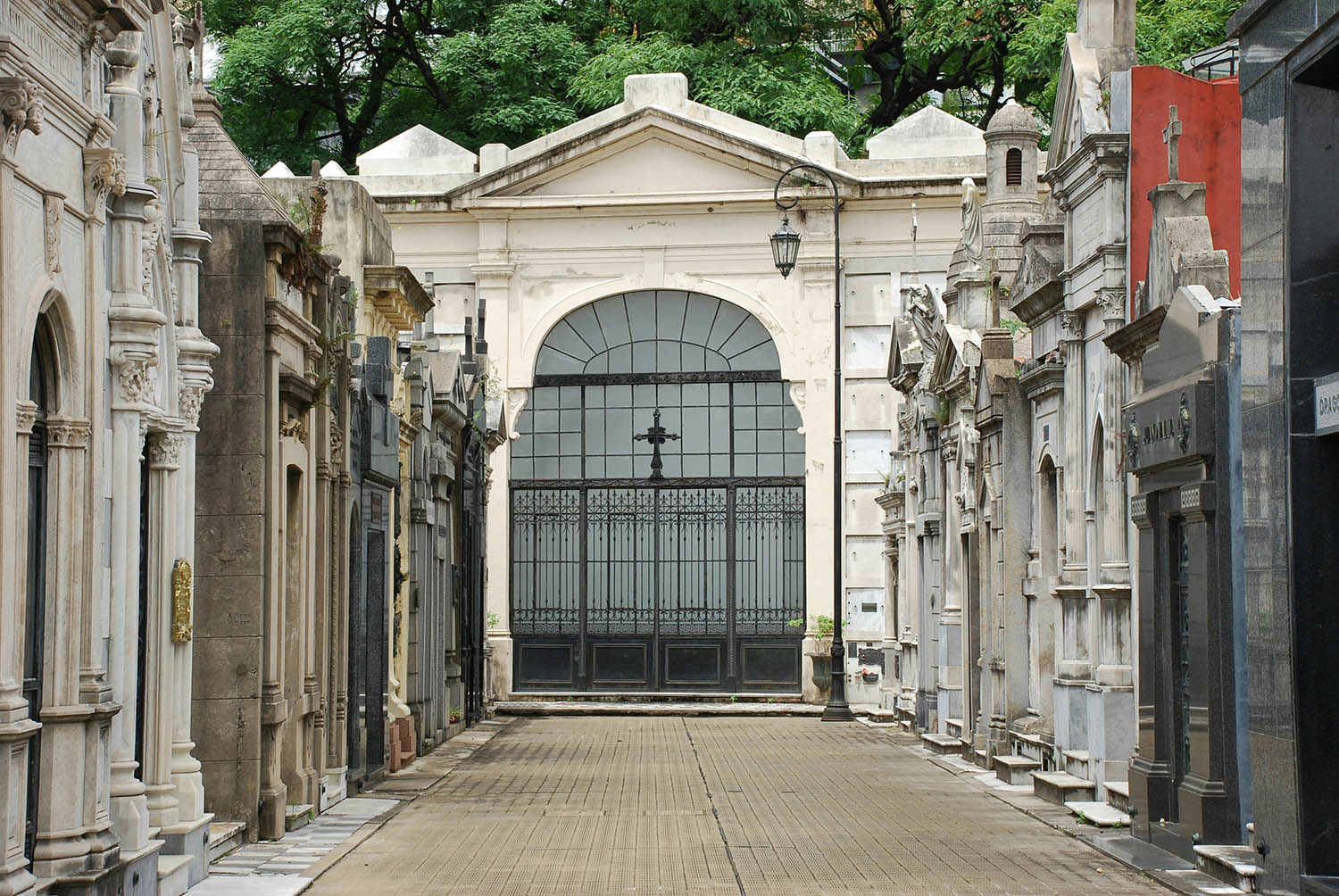
The most famous grave here is, of course, Evita’s. Unlike the grand tombs surrounding it, hers is tucked away, almost modest. But that doesn’t stop visitors from coming in droves, leaving flowers and notes, decades after her passing.
Her influence didn’t die with her, and standing at her resting place, surrounded by others paying their respects, makes that clear.
Don’t just look for Evita’s tomb — slow down. Wander the narrow paths, let yourself get lost among the grand mausoleums, read the names, and notice how each tells a different story.
Teatro Colón
Even if you’ve never seen an opera, even if you don’t think you care about grand theatres, step inside Teatro Colón. The chandeliers, the velvet seats, the impossibly intricate details — it’s one of the world’s most stunning opera houses.
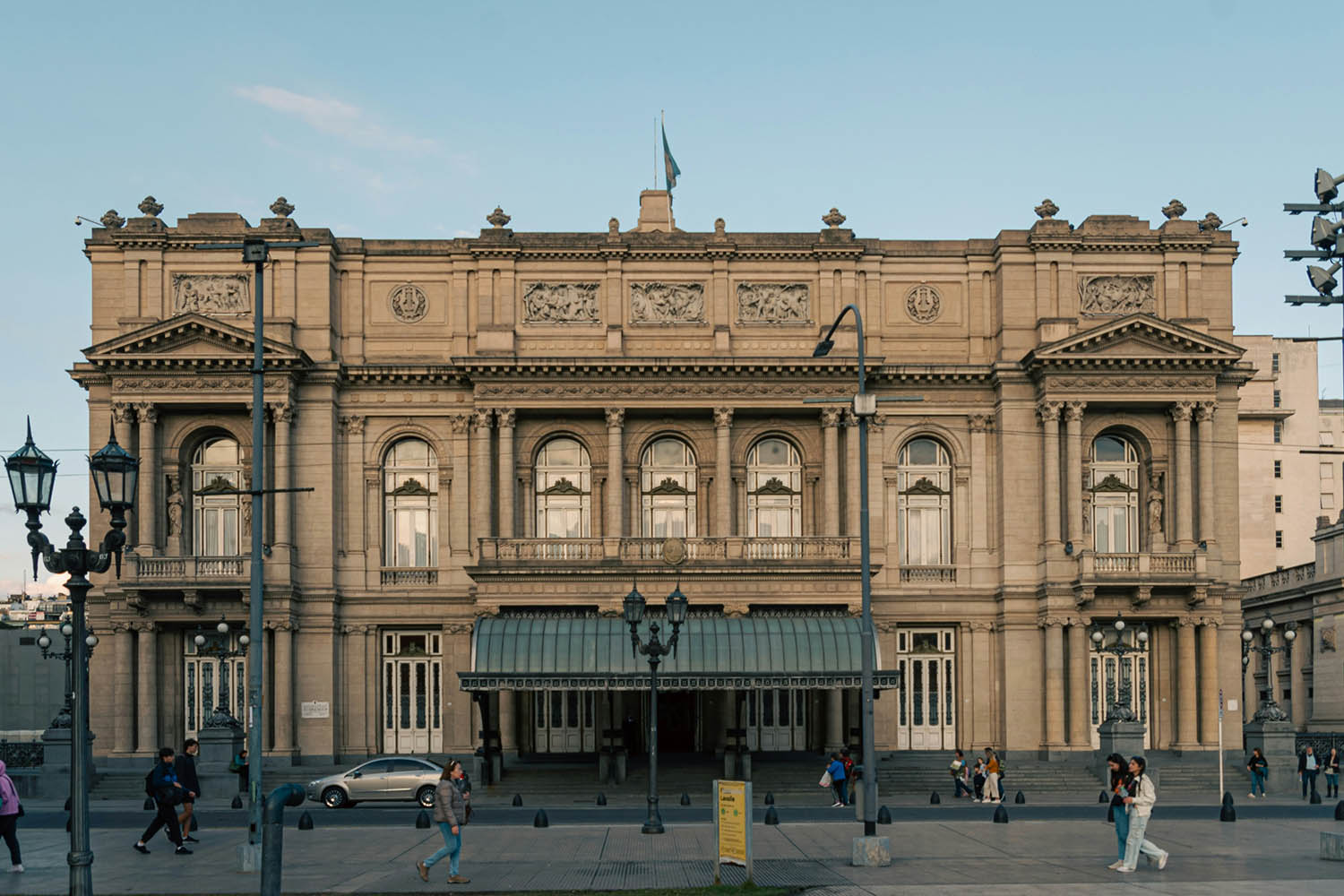
Acoustically, it’s considered near perfect, making it a dream for performers. If you can, take a guided tour to see its hidden corners, or better yet, catch a performance.
Sitting in that grand hall as the music fills the space is one of the most immersive ways to connect with Buenos Aires’ cultural legacy.
2. Immerse Yourself in Tango Culture
Tango is a language, a way of connecting, a pulse that runs through Buenos Aires. It’s in the grand theatres and the unassuming bars, in choreographed stage shows and spontaneous street performances.
I saw it first in a dimly lit venue, where dancers moved with precision, intensity, and something deeper — something unspoken but undeniable. Later, I saw it on the streets, where the steps were less polished but just as powerful.
Watching, learning, and feeling tango is one of the most immersive ways to experience Buenos Aires.
Watch a Tango Show
For the drama, the skill, and the sheer artistry, a tango show is unforgettable. Venues like El Querandí, Café de los Angelitos, and Señor Tango bring the dance to life with elaborate performances.
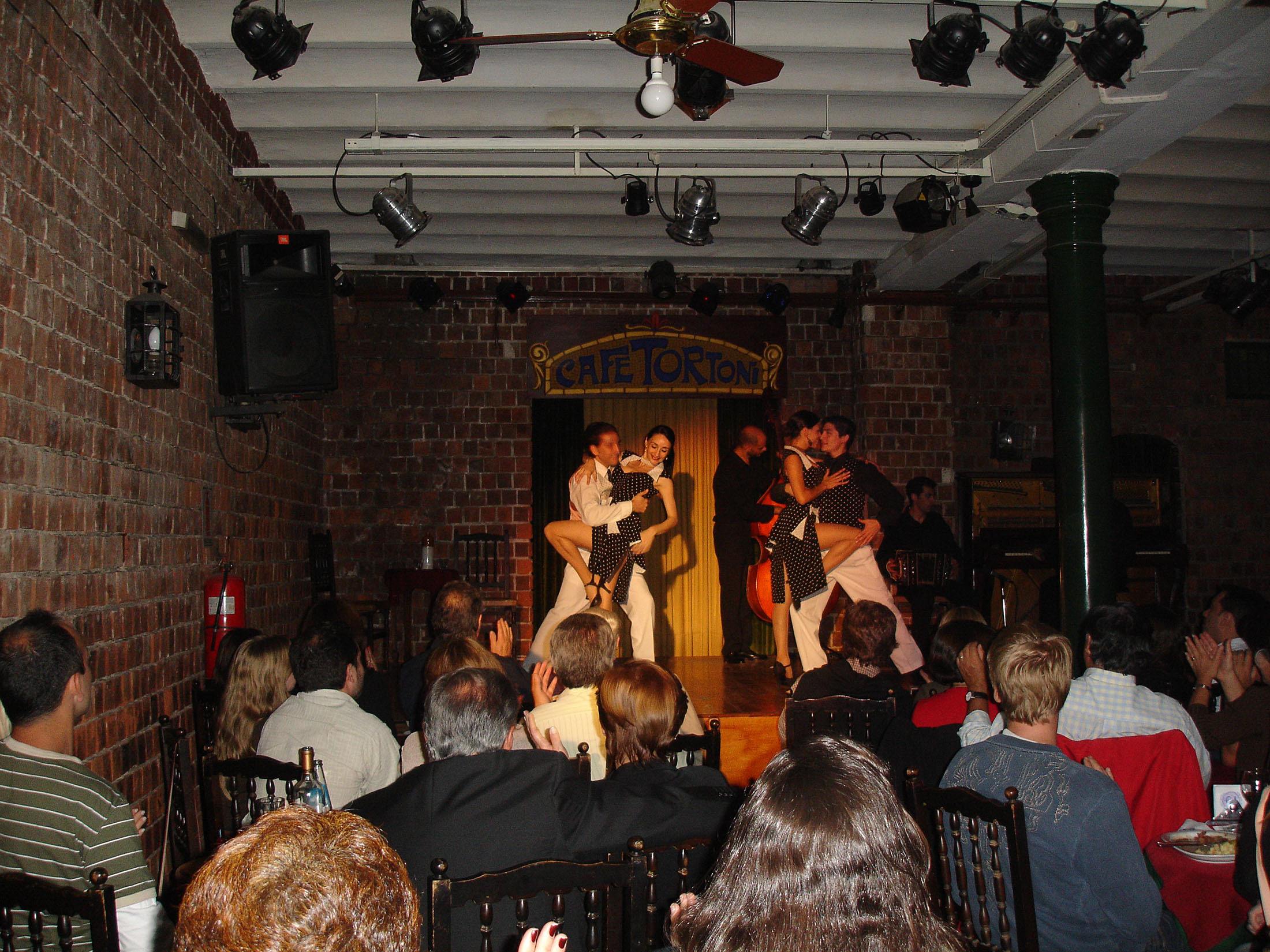
In the darkened room, the music starts — slow, deliberate. Then the dancers move, locked in an intense exchange.
There’s a sharpness to their steps, but also a softness in the way they hold each other, a quiet understanding that tango isn’t just about movement — it’s about storytelling.
Join a Milonga
But tango isn’t only for watching — it’s for participating.
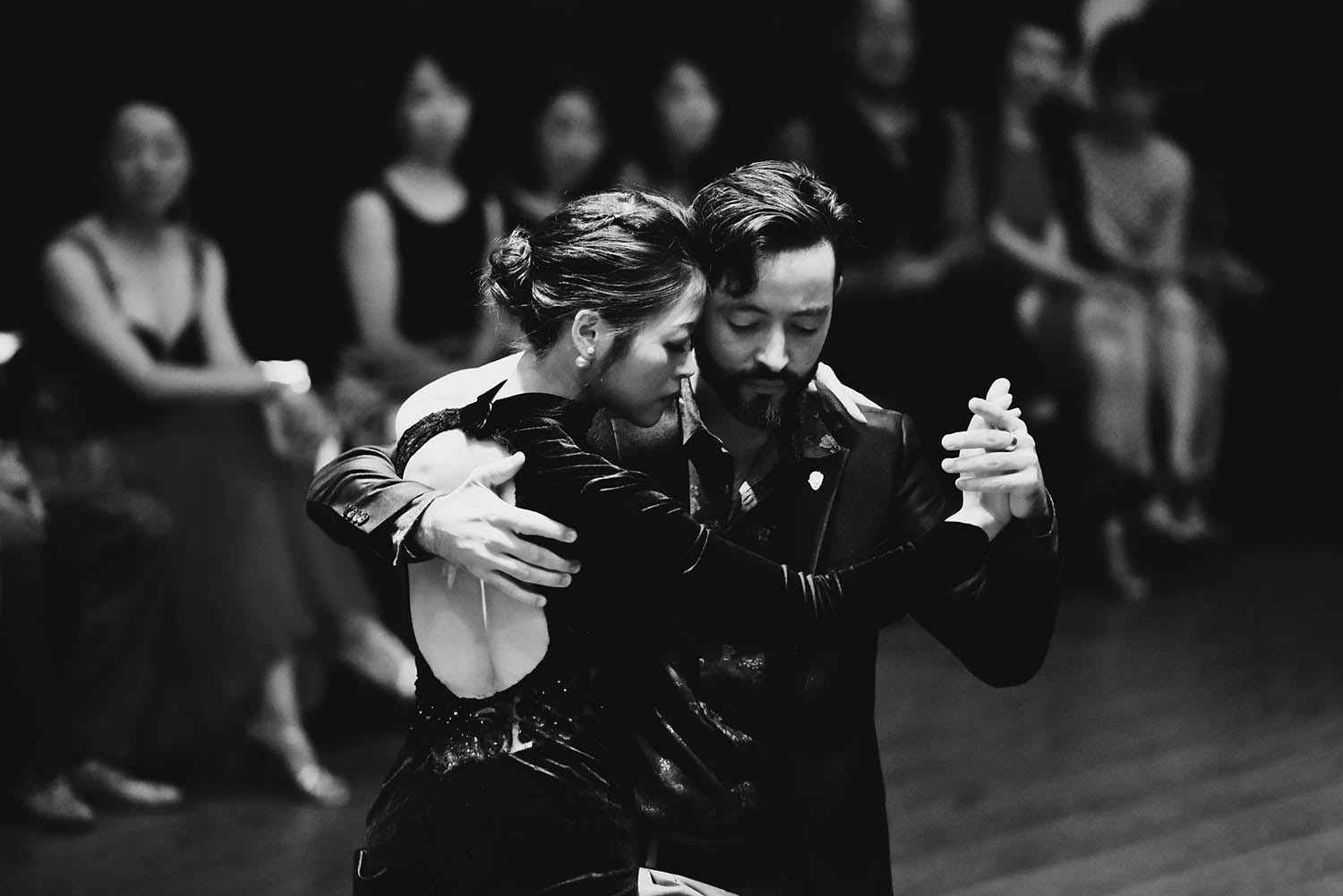
Milongas are where tango truly lives, away from the bright lights of the stage. These social dance halls are where locals come to dance, to connect, to lose themselves in the music.
Some, like Salon Canning, feel timeless — wooden floors, dim lighting, a space where generations of dancers have come and gone.
Others, like La Catedral, are more relaxed (and possibly even outdated with weathered decor), welcoming beginners and experienced dancers alike.
When you first step into a milonga, you might hesitate at the edge of the dance floor, unsure if you should even attempt it. But here’s the thing — milongas aren’t about perfection. They’re about feeling the music, stepping into something bigger than yourself.
Go to a milonga, order a drink, and just watch. Notice the way people connect through movement, the way the music pulls them in.
Then, if you’re feeling bold, accept a dance — even if you don’t know the steps.
If you want to take it a step further, look for the cabeceo (subtle eye contact used to invite a dance), then say:
➡️ “¿Bailamos?” (Shall we dance?) – Simple and direct.
➡️ “Soy nuevo/a en esto, pero me gustaría intentarlo.” (I’m new at this, but I’d love to try.) – Shows enthusiasm and invites patience.
➡️ “No sé mucho, pero sigo bien.” (I don’t know much, but I can follow well.) – Lighthearted and confident.
Visit the Museo del Tango
To truly understand tango, you have to go beyond the dance. The Museo del Tango traces its history from its origins in the working-class neighbourhoods of Buenos Aires to its rise as a global phenomenon. The evolution of the music, the influence of European immigrants, the way tango reflects the soul of Argentina — it’s all here.
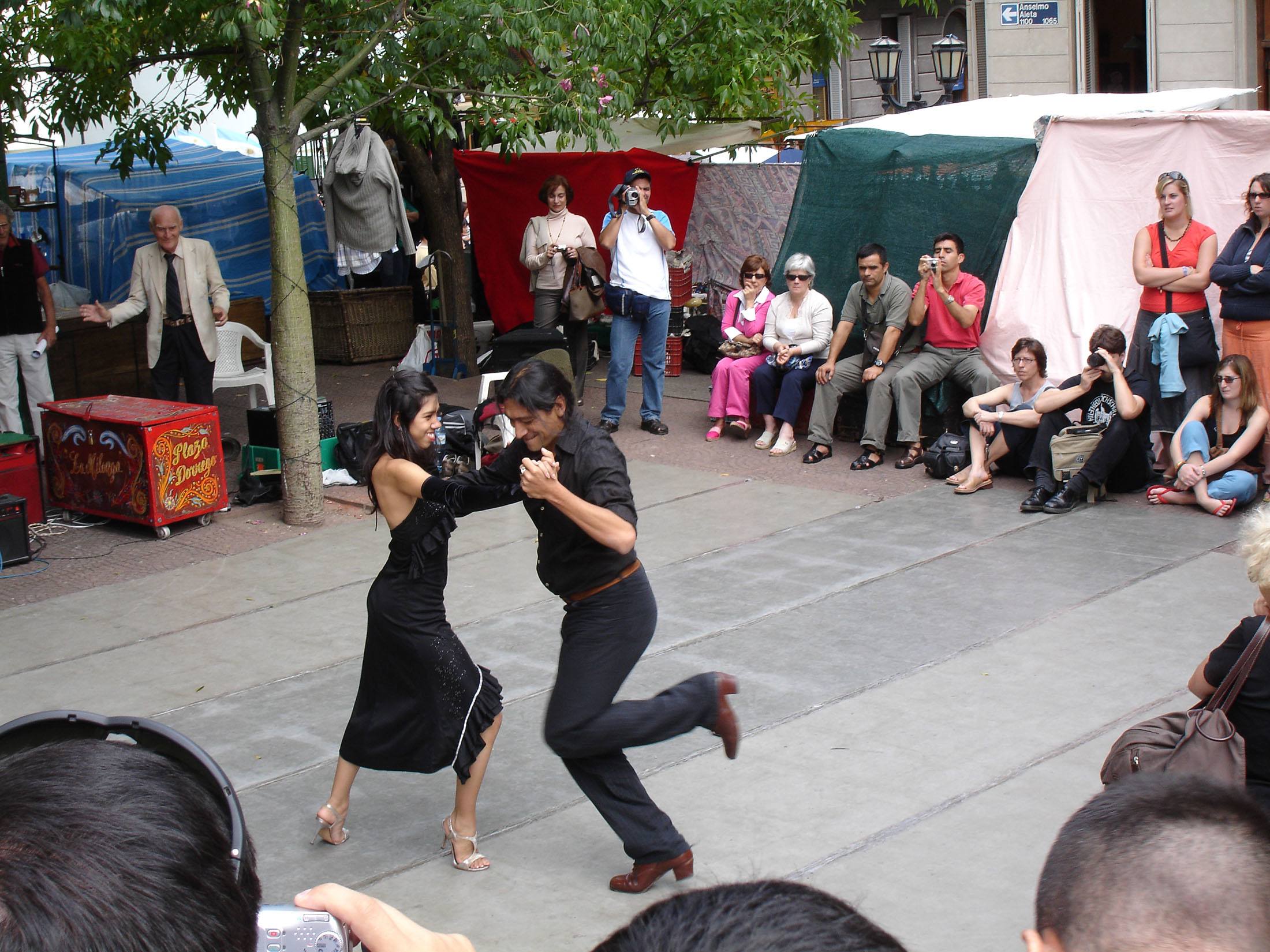
Standing in front of vintage photographs, watching grainy footage of dancers from decades past, you’ll realise that tango isn’t just a dance. It’s memory, passion, and a city’s heartbeat.
Tango is everywhere in Buenos Aires, from formal venues to impromptu performances in San Telmo. Let yourself get caught up in it.
Watch it. Dance it. Feel it.
Learning to tango while in Buenos Aires is a bucket list item for many travellers and tourists alike. Visit Gringo in Buenos Aires's website for comprehensive details regarding schools and where to see live shows.
3. Indulge in Buenos Aires' Culinary Scene
Eating in Buenos Aires is about ritual. Meals stretch into the late hours, flavours are bold but unpretentious, and portions are generous.
Whether it’s the perfectly grilled steak, the flaky empanadas, or the warm medialunas with coffee, every bite tells part of the city’s story.
I learned this firsthand at a parrilla, where my steak barely fit on the plate, its juices soaking into the wooden board beneath it.
There’s an art to eating in Buenos Aires, and the only way to understand it is to dive in.
Try Argentine Steak at a Parrilla
In Buenos Aires, steak is a statement.
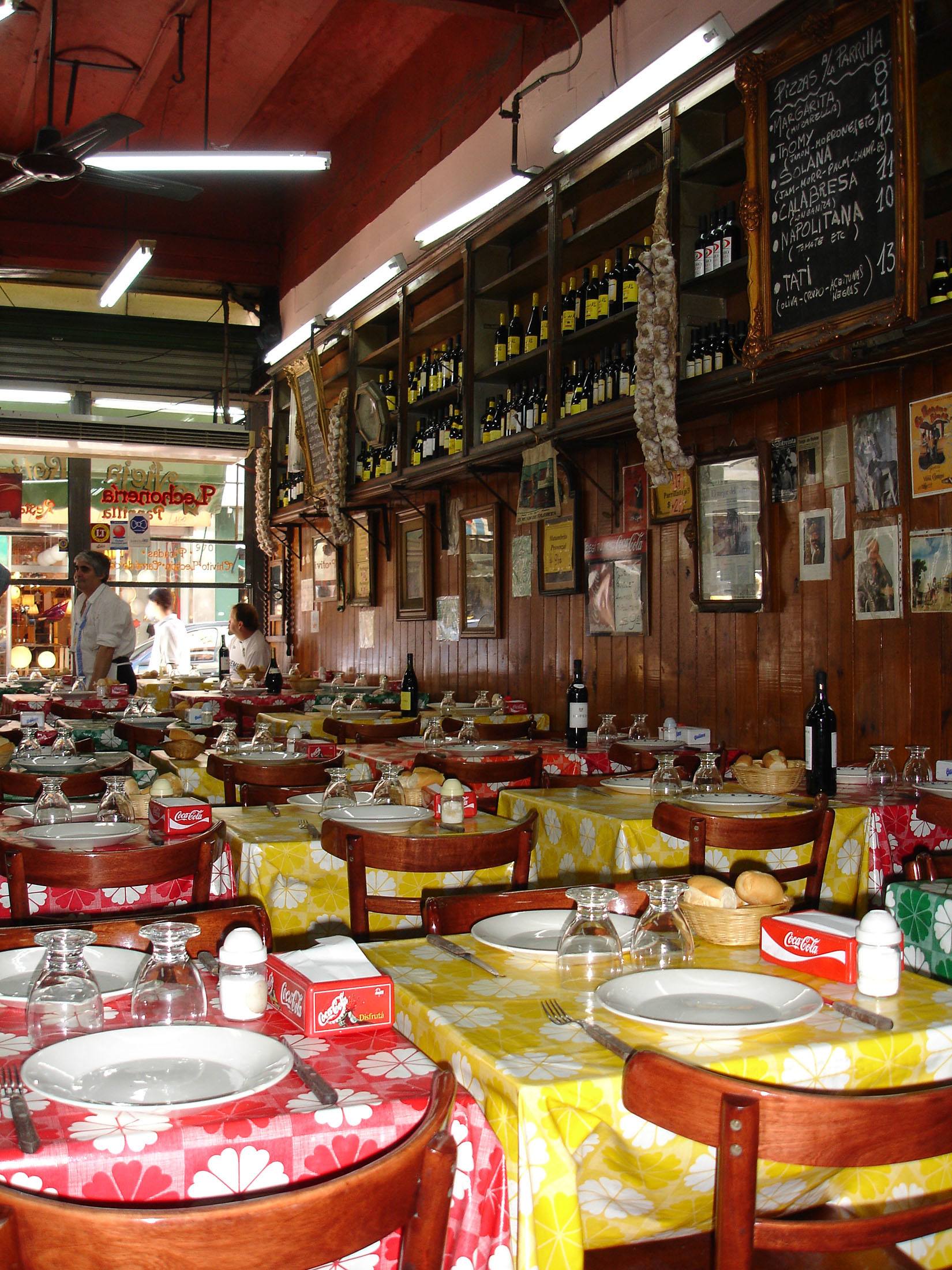
Portions are unapologetically huge, often sprawling across the entire plate, sometimes with sides exiled to another dish altogether. Grilled over wood or charcoal, the meat is thick, tender, and dripping with juice.
Argentina’s obsession with beef is well-earned — after cattle were introduced in the 16th century, the country’s vast open spaces and ideal climate helped it become one of the world’s top exporters. But in Buenos Aires, the real art of steak lies in the parrilla, where simplicity reigns.
The first time I ordered a bife de chorizo, I didn’t realise what I was in for. The plate arrived, and it was all steak — no garnish, no distractions, just a slab of perfectly seared meat. Every bite had that balance of crispy, smoky char and melt-in-your-mouth tenderness.
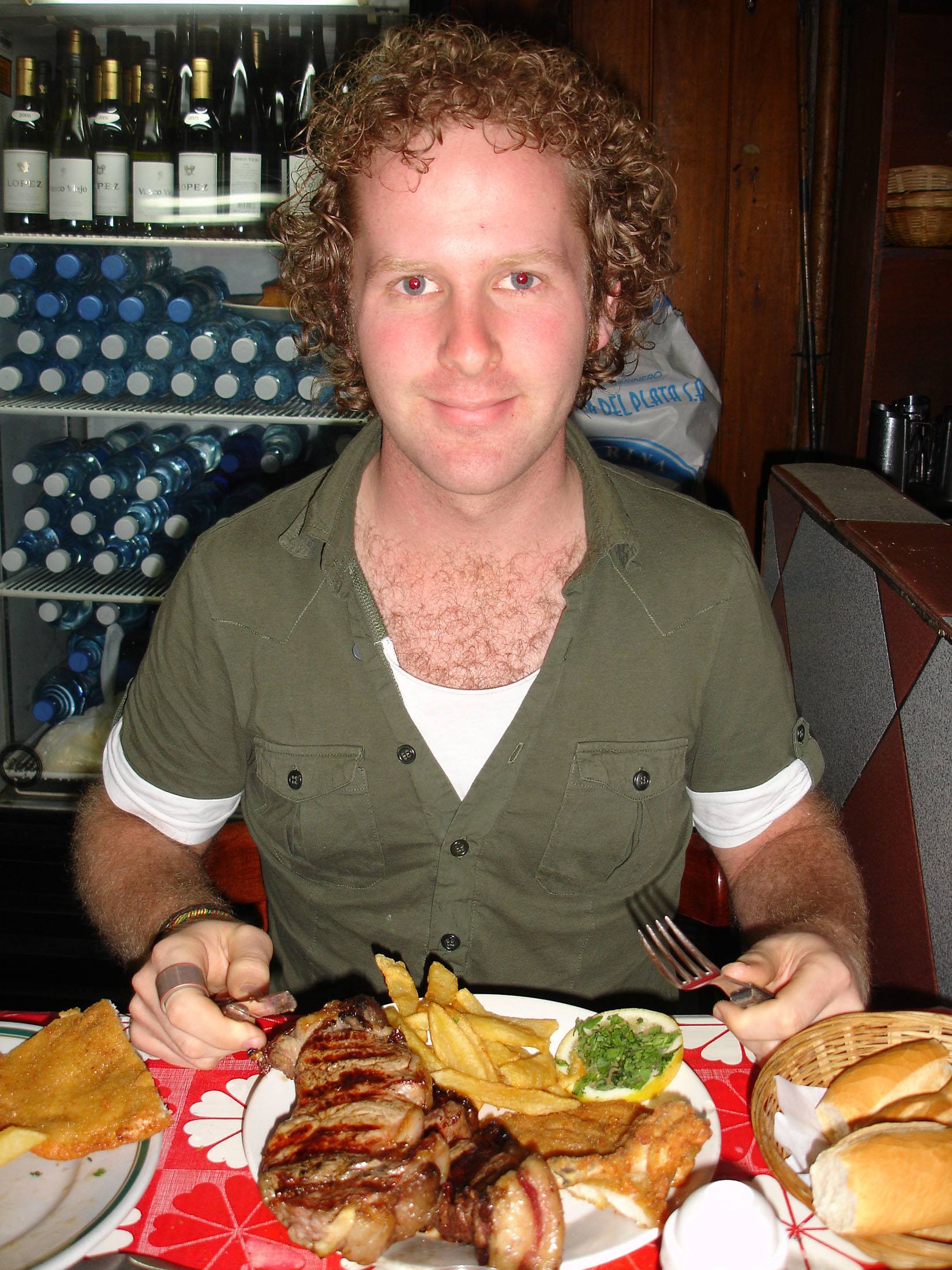
A good parrilla knows that beef doesn’t need much — just salt, heat, and time.
If you want to experience steak the way porteños do, head to Don Julio, La Cabrera, or La Brigada, where waiters will sometimes slice through the meat with a spoon just to prove its tenderness.
If you’re unsure which cut to order, ask — Argentine beef comes in a dizzying variety, and the menu won’t always translate neatly.
And one last thing — loosen your belt before you dig in. I had to after my first parrilla experience, at least two notches.
If you love steak, Buenos Aires will ruin you for anywhere else.
Go to a parrilla and let the waiter choose your steak cut. Don’t ask for recommendations — just say, "What’s your favourite?" and go with it.
Sample Empanadas & Medialunas
While steak steals the spotlight, Buenos Aires’ everyday snacks deserve just as much attention.

Empanadas — golden, flaky pastries stuffed with meat, cheese, or vegetables — are sold everywhere, from bakeries to street stalls. Every province in Argentina has its own take, but in Buenos Aires, the carne picada (minced beef) and jamón y queso (ham and cheese) varieties are the classics.
Then there are medialunas — Argentina’s answer to the croissant, but denser, sweeter, and usually enjoyed with a strong coffee. The best ones come from Confitería La Pasta Frola or Las Violetas, where the pastries feel like they’ve been made the same way for generations.
Explore San Telmo Market
Food markets in Buenos Aires are places to soak in the city’s culture.
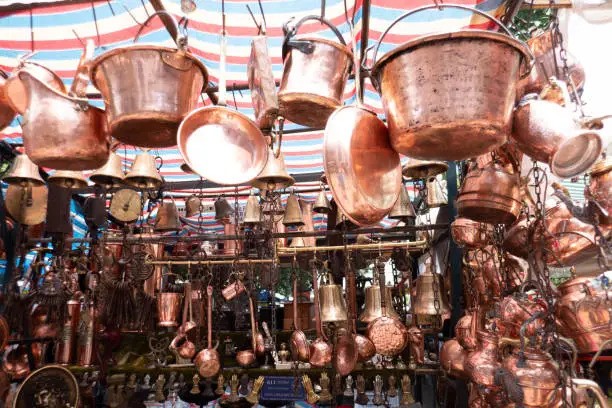
San Telmo Market is where butchers, bakers, and spice vendors share space with antique dealers and artists, creating an atmosphere that’s equal parts chaotic and charming. Here, you can try everything from fresh chorizo and artisanal cheeses to dulce de leche in every imaginable form.
I came for the food, but I stayed for the energy — the clatter of plates, the banter of vendors, the occasional burst of street music filtering in from outside.
Forget rushing through with a checklist. Pick a stall, chat with the vendor, let them recommend something. Order a glass of Malbec, stop for a choripán and eat it standing up like a local, watching the street musicians.
Eating in Buenos Aires isn’t something you fit into your schedule — it’s the schedule.
4. Discover Buenos Aires’ Most Vibrant Neighbourhoods
Buenos Aires is a collection of neighbourhoods, each with its own personality. Some are loud and chaotic, others are refined and relaxed.
The trick to experiencing the city is knowing where to slow down, where to get lost, and where to just sit and watch the world go by.
La Boca & Caminito
La Boca is raw, loud, and bursting with colour. The buildings are a patchwork of primary and secondary hues, each façade a reflection of the neighbourhood’s immigrant past.
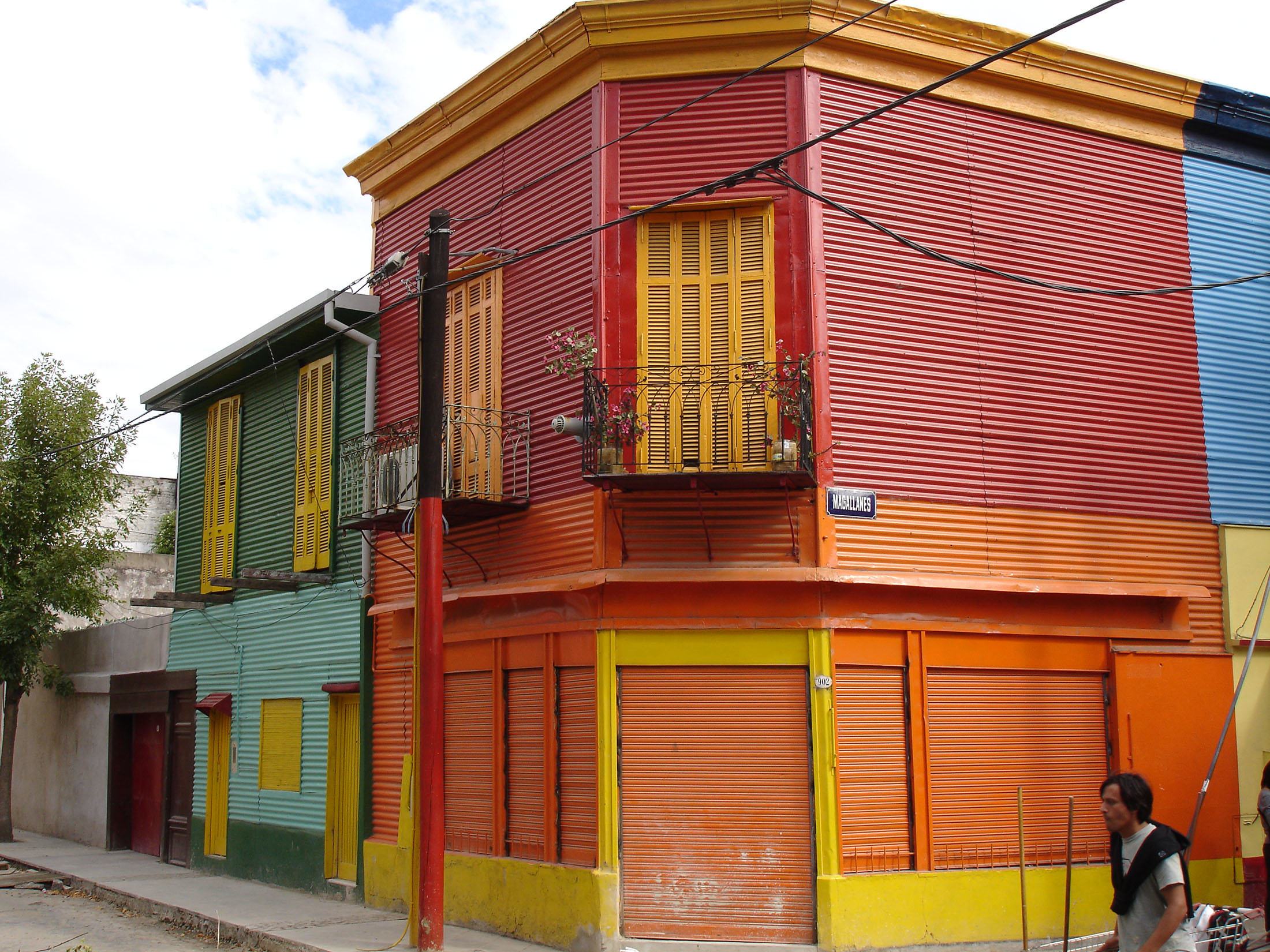
The name La Boca means "the mouth" in Spanish, and while some say it comes from its location at the mouth of the Matanza-Riachuelo River, others argue it’s a nod to its Italian roots, resembling a northern Italian port town. Either way, the neighbourhood feels like nowhere else in Buenos Aires.
Caminito, the famous pedestrian street, is where the city’s postcard version of La Boca comes to life. Musicians and tango dancers perform between market stalls, where artisans sell hand-painted signs and leather goods. But while most visitors stop here, La Boca has more to offer if you’re willing to wander.
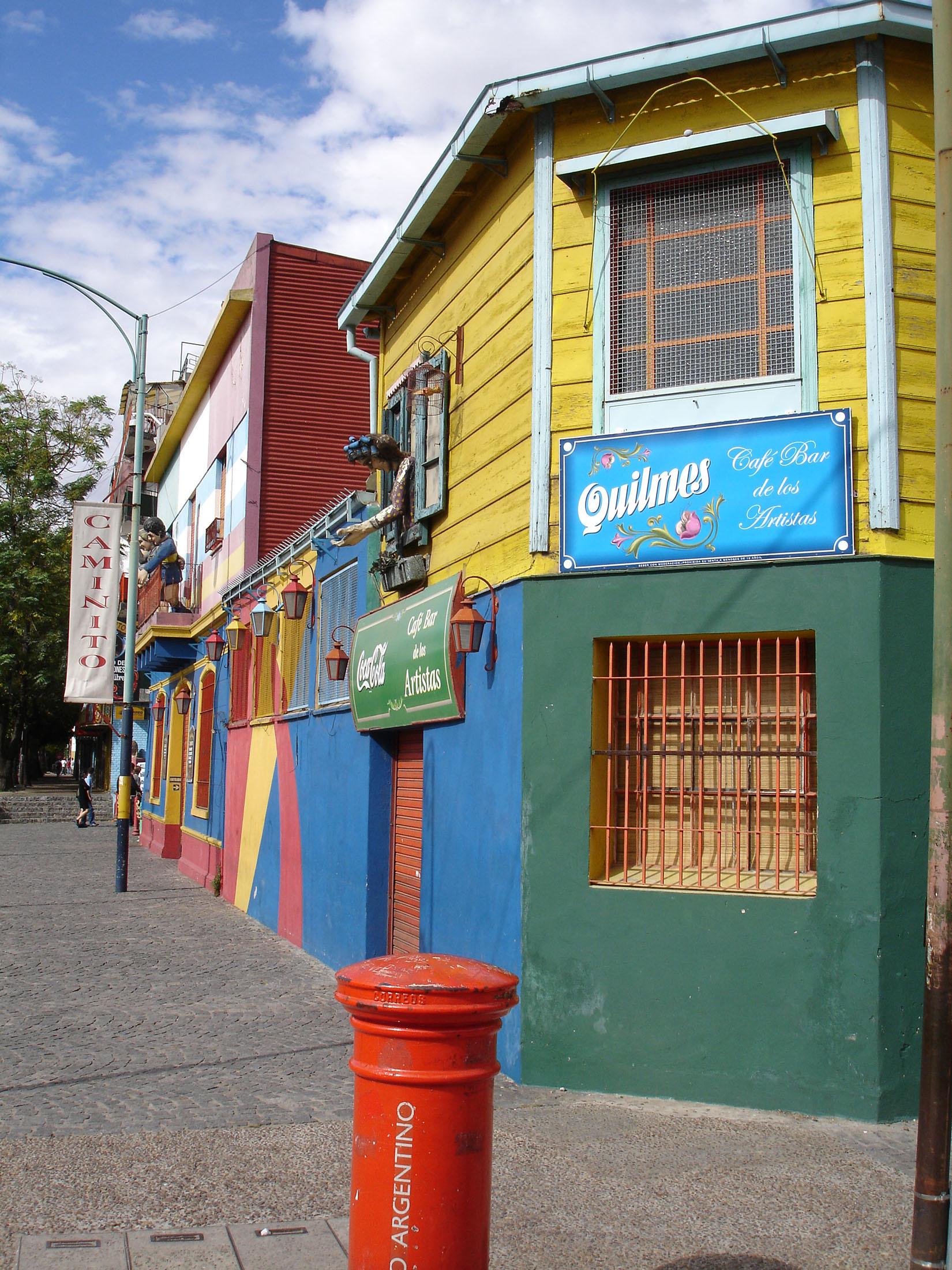
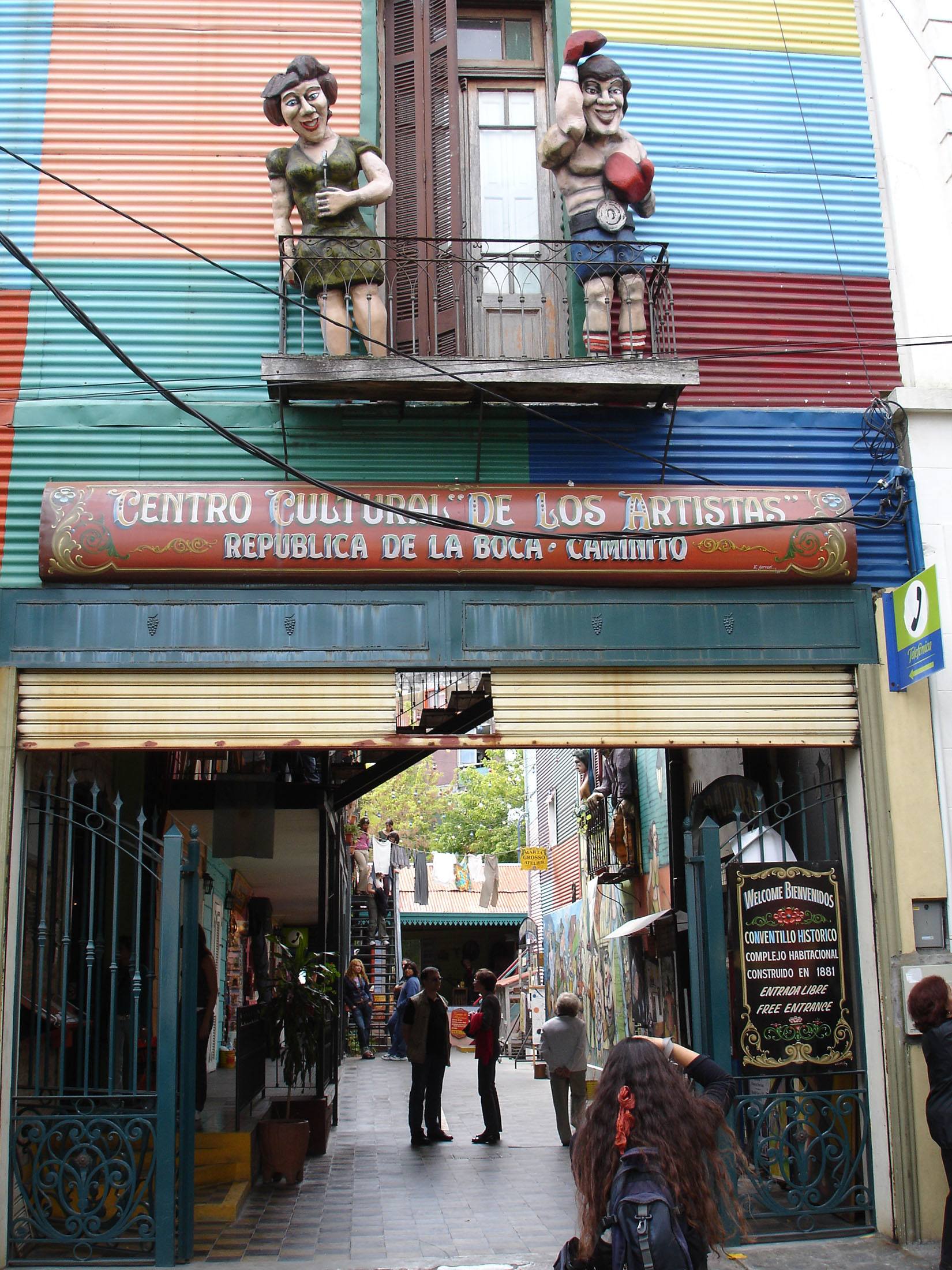
I took my time, ducking into small cafés when the heat got too much, watching artists paint on the street, and listening to buskers play old tango classics. The energy is infectious — chaotic, yet deeply authentic.
For football fans, La Bombonera, home to Boca Juniors, is a pilgrimage site. Even on non-game days, you can feel the intensity, the obsession, the way football here isn’t just a sport — it’s identity.
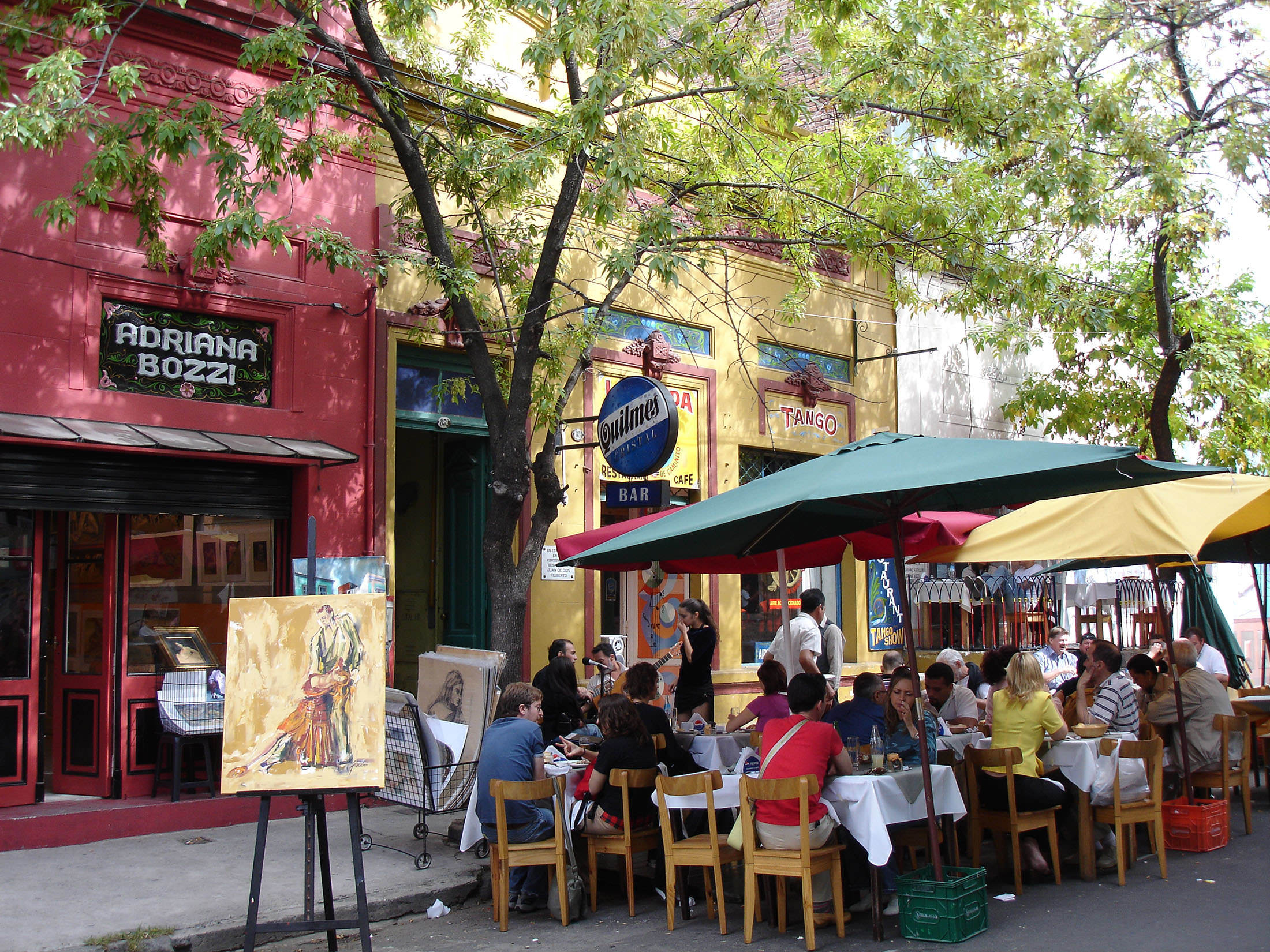
Some say La Boca feels more European than other parts of Buenos Aires, but I’d argue it’s something else entirely. It’s a neighbourhood that wears its history on its walls — bright, bold, and completely unfiltered.
Ask a street artist in Caminito about their work. You might end up with a story — or a hand-painted souvenir with real meaning.
Palermo Soho & Palermo Hollywood
Palermo is practically a city within the city.
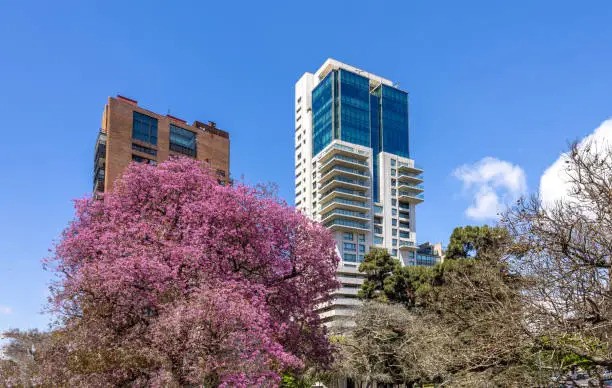
Palermo Soho is for the creatives, filled with boutique stores, indie bookshops, and streets that seem designed for aimless wandering. Every corner has a café with outdoor tables, where locals sit for hours over coffee and medialunas.
Palermo Hollywood, on the other hand, comes alive at night. This is where you’ll find the city’s best bars, speakeasies hidden behind unmarked doors, and restaurants that fill up long before the sun sets.
You can spend an entire day in Palermo, moving between bookstores, cafes, and parks, with no real agenda. That’s the beauty of it — this is a neighbourhood best experienced without a plan.
San Telmo
San Telmo is Buenos Aires’ oldest neighbourhood, and you can feel it in the cobblestone streets, the antique stores packed with forgotten treasures, and the crumbling mansions turned into art spaces.
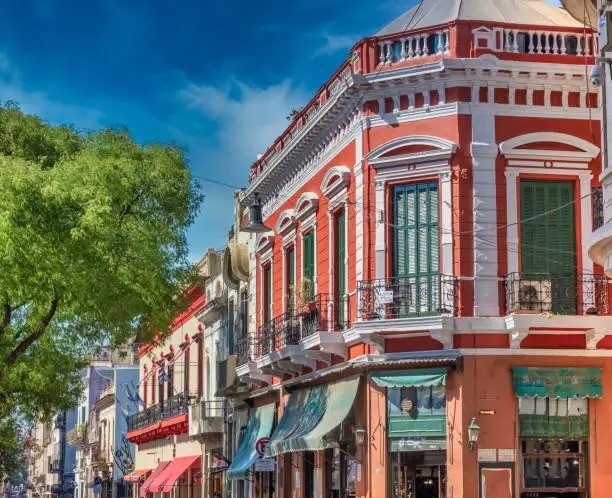
Sundays are the best time to be here — that’s when Feria de San Telmo (10am to 4pm), the famous market, takes over the streets.
Walking through the market, you'll find everything from handcrafted leather goods to vintage cameras to musicians playing tango on the sidewalks.
But the best part is stopping at Plaza Dorrego, grabbing a drink, and watching a couple dance tango right in the square, as if it were the most natural thing in the world.
Puerto Madero
If La Boca is chaotic and San Telmo is historic, Puerto Madero is sleek and modern.
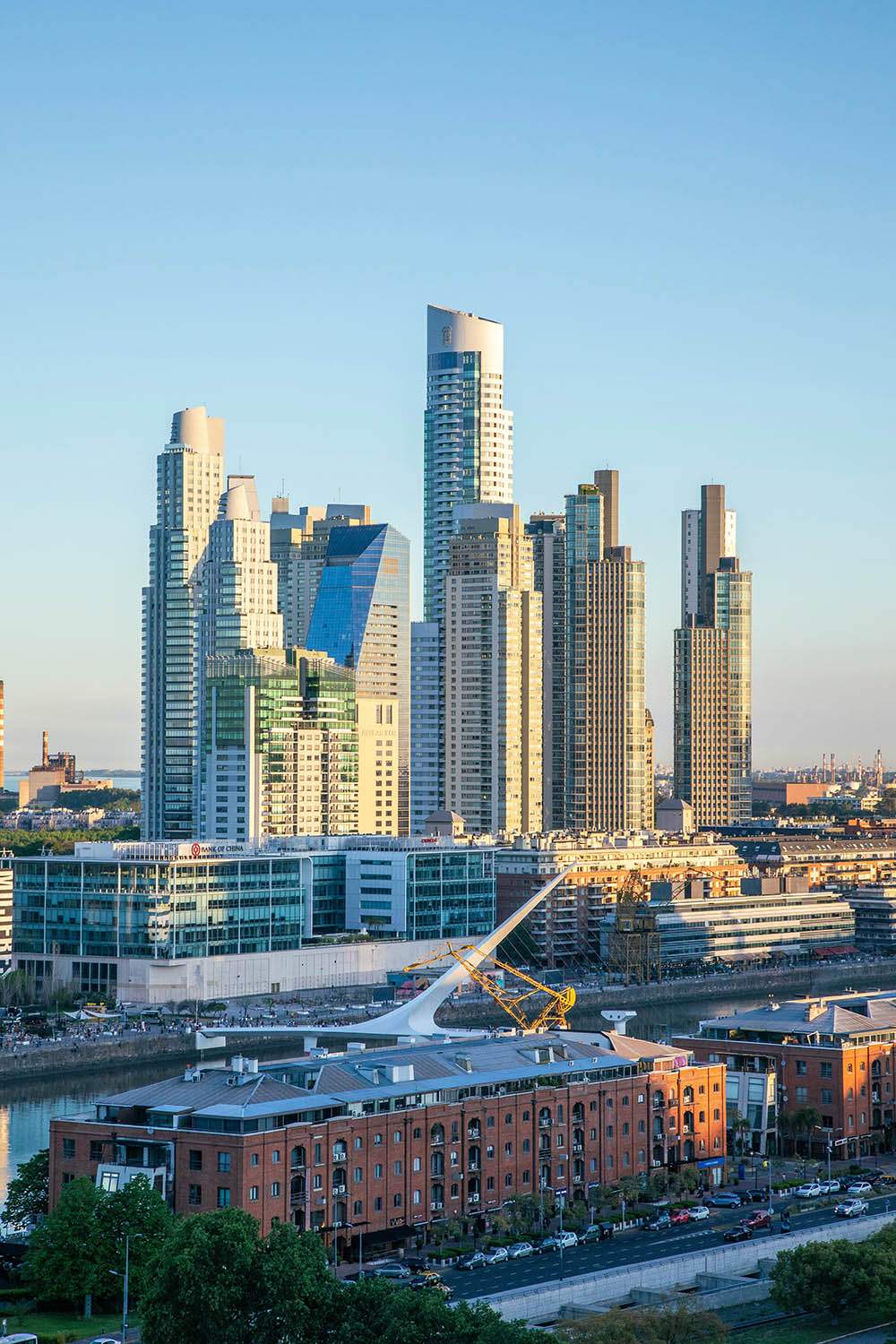
This waterfront district feels completely different from the rest of the city — wide, clean streets, high-end restaurants, and a skyline of glass towers. The highlight here is Puente de la Mujer, a striking white pedestrian bridge designed by Santiago Calatrava.
Some aren’t sure they’ll like Puerto Madero at first — it feels too polished, too different from the Buenos Aires in other areas. But walking along the river at sunset, when the city lights reflect on the water, you’ll get it.
Buenos Aires isn’t just one thing — it’s all of these places, all of these contrasts, existing together.
5. Unwind in Buenos Aires’ Green Spaces
Buenos Aires may be a fast-moving city, but it knows how to slow down. Its parks and gardens are where locals gather, where friends linger over mate, and where nature takes centre stage amid the urban sprawl.
These green spaces offer a glimpse into a different side of the city, one that thrives on unhurried afternoons and open-air conversations.
Bosques de Palermo (Palermo Woods)
The largest park in Buenos Aires, Bosques de Palermo, is a favourite among joggers, cyclists, and families looking to relax. Its winding pathways lead past rose gardens, small lakes, and shady picnic spots.
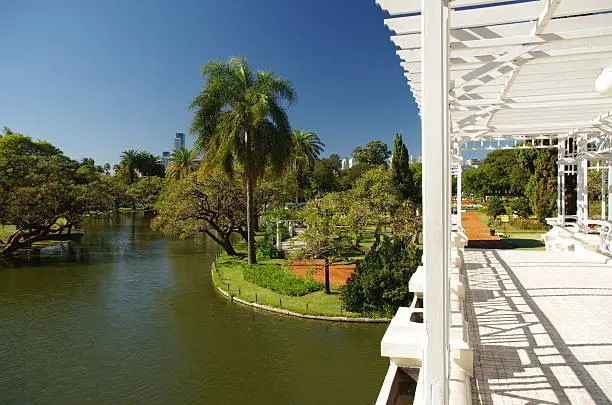
Rent a paddle boat for a slow ride across the water or simply find a bench and watch the world go by.
On weekends, it transforms into a social hub, with locals gathering to drink mate, rollerblade, or play music.
Japanese Gardens
For a more structured, manicured escape, the Japanese Gardens provide a peaceful retreat. Carefully designed to reflect traditional Japanese landscaping, the gardens feature koi-filled ponds, arched bridges, and bonsai displays.
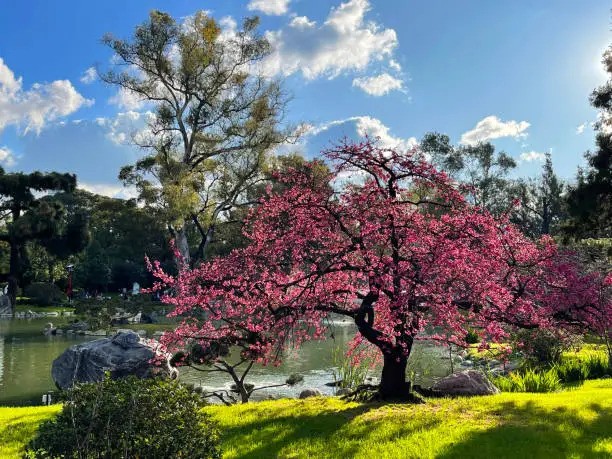
A walk here feels like stepping into a different world — one where every stone and tree is deliberately placed to create harmony. There’s also a tea house and cultural centre, offering insight into Japanese traditions and their influence on Buenos Aires.
Jardín Botánico (Botanical Gardens)
Tucked away in the city, the Jardín Botánico is a lush, shaded haven for plant lovers and those looking for a quiet stroll. Home to thousands of species of flora, the gardens are dotted with sculptures and greenhouses, some dating back to the late 19th century.
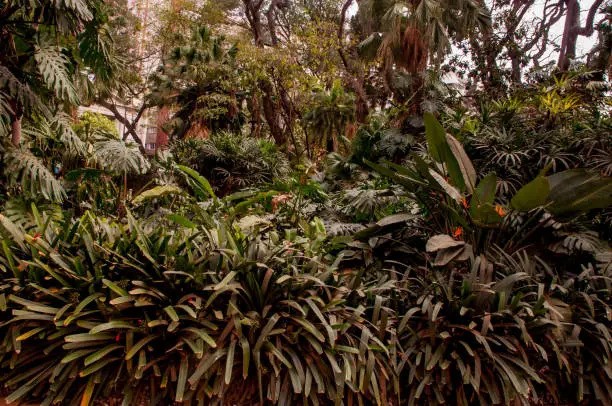
It’s a great place to slow down, sit under a tree, and take in the diverse plant life from around the world.
Unlike the more expansive parks, this one feels intimate — ideal for those seeking a moment of calm amid the city’s energy.
6. Experience Buenos Aires’ Cultural Attractions
Buenos Aires is a city that thrives on culture, where art, literature, and tradition shape life.
From world-class museums to century-old bookstores and markets celebrating Argentina’s rural roots, these cultural attractions offer a deeper understanding of what makes the city tick.
MALBA (Museum of Latin American Art of Buenos Aires)
For a crash course in Latin American art, MALBA is the place to go. This contemporary museum houses works from some of the region’s most renowned artists, including Frida Kahlo, Diego Rivera, and Antonio Berni. The collection moves through different artistic movements, offering a visual narrative of Latin America’s history and identity.
Whether you're an art enthusiast or just curious, MALBA provides a fascinating look into the creativity that has shaped the continent.
El Ateneo Grand Splendid
Few bookstores in the world can match the grandeur of El Ateneo Grand Splendid.
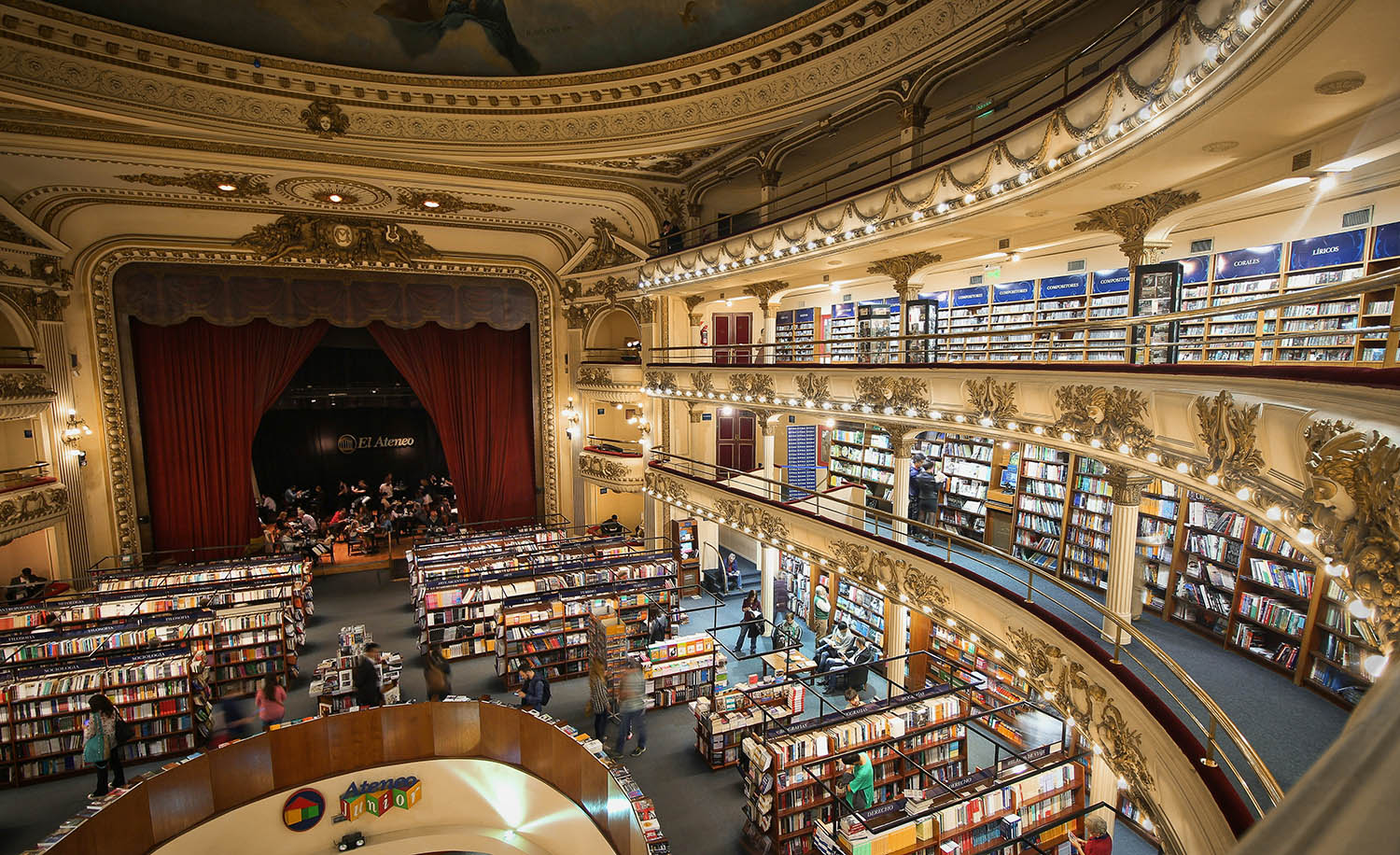
Originally a theatre from the early 1900s, it has been transformed into a book lover’s dream, with shelves lining the ornate balconies and a café set on what was once the stage.
Browse books beneath chandeliers, sit in plush theatre boxes with a novel in hand, or simply admire the preserved frescoes on the ceiling. Even if you’re not planning to buy anything, walking through El Ateneo is an experience in itself — one that makes you appreciate Buenos Aires’ deep literary culture.
Pick a book — any book — at El Ateneo, find a seat, and read a few pages. Even if it’s in Spanish.
Feria de Mataderos
For something entirely different, the Feria de Mataderos brings a slice of Argentina’s gaucho (cowboy) heritage into the city.
Held on weekends, this open-air market is packed with stalls selling handmade crafts, leather goods, and traditional foods like empanadas and choripán. But the real highlight is the folk performances — dancers in traditional dress, live chacarera music, and even horse-riding demonstrations showcasing the skills of Argentina’s rural horsemen.
Feria de Mataderos is a reminder that Buenos Aires isn’t just about European influence — it’s also deeply connected to the country’s Indigenous and gaucho traditions.
Neighbourhood Highlights – Where to Stay in Buenos Aires
Choosing the right neighbourhood can completely shape your experience in Buenos Aires.
Best Areas to Stay Based on Travel Style
Some areas are all about historic charm, while others pulse with nightlife or offer a quiet escape by the water. Whether you're looking for luxury, culture, or a central base, here's where to stay based on your travel style.
Recoleta – For Luxury & Elegance
If you’re after grand architecture, high-end hotels, and a refined atmosphere, Recoleta is the place to be. This is Buenos Aires at its most European, with wide boulevards, French-style buildings, and a café culture that encourages lingering over a cortado.
It’s also home to Recoleta Cemetery, where Argentina’s most famous figures — including Evita Perón — are buried. Upscale shopping, museums, and some of the city’s best fine dining make this the ideal spot for a luxurious stay.
Palermo – For Nightlife & Trendy Vibes
Palermo is the coolest neighbourhood in Buenos Aires, with an energy that shifts depending on the time of day. By morning, Palermo Soho is a haven for boutique shopping, independent bookstores, and stylish cafés. By night, Palermo Hollywood comes alive with speakeasies, rooftop bars, and some of the best restaurants in the city.
If you want trendy accommodation, buzzing nightlife, and a walkable neighbourhood, this is where you want to be.
San Telmo – For History & Bohemian Charm
San Telmo is where Buenos Aires’ history and artistic spirit collide. Cobblestone streets, colonial-era buildings, and a thriving antique market make it one of the city’s most character-filled neighbourhoods. Sundays bring the Feria de San Telmo, a sprawling street market filled with handmade crafts, tango dancers, and street musicians.
If you want a bohemian atmosphere with a deep cultural feel, San Telmo offers boutique hotels, converted mansions, and a location close to the city’s historic centre.
Puerto Madero – For Modern Luxury & Waterfront Views
Sleek, modern, and a world away from Buenos Aires’ older districts, Puerto Madero is for those who want high-end hotels, fine dining, and riverfront strolls. With its glass towers, upscale apartments, and wide pedestrian walkways, it’s a contrast to the rest of the city.
The Puente de la Mujer bridge and Reserva Ecológica Costanera Sur add a scenic touch, making it a great choice for those who prefer a polished, relaxed atmosphere.
Microcentro – For Business & Budget Travellers
For a central, no-fuss stay, Microcentro offers easy access to Buenos Aires’ main attractions. It’s home to the Obelisco, Teatro Colón, and Plaza de Mayo, making it a strategic base for sightseeing.
While the area quiets down in the evenings compared to Palermo or San Telmo, it’s great for those who prioritise affordability and location over ambiance. Budget-friendly hotels and hostels are common here, making it a solid choice for travellers looking to stay in the heart of the action without breaking the bank.
Essential Travel Tips for Buenos Aires
Buenos Aires is a city that rewards those who take the time to understand its rhythms. From navigating its airports to handling money and staying safe, these tips will help you experience the city with confidence.
Getting to Buenos Aires
Buenos Aires is well-connected by air, land, and even sea. Whether you're flying in, arriving by long-distance bus, or crossing by ferry from Uruguay, the journey shapes your first impression of the city.
▶ By Air
Buenos Aires is served by Ezeiza International Airport (EZE) for most long-haul flights and Aeroparque Jorge Newbery (AEP) for domestic and some regional flights. Ezeiza is about 45 minutes from the city centre, while Aeroparque is much closer, making it more convenient for internal travel.
Getting from the Airport to the City
- Taxi & Rideshare: Official Ezeiza taxis have set fares, but apps like Cabify and Uber can sometimes be cheaper.
- Airport Shuttle: Tienda León runs an affordable shuttle to Retiro Station, with further connections via taxi or public transport.
- Public Transport: There’s no direct subway link, but local buses serve both airports — though they can be slow and confusing for first-time visitors. Bus 8 takes you from Ezeiza airport to Plaza de Mayo or Congress.
▶ By Bus (Colectivos de Larga Distancia)
Argentina has an extensive and comfortable long-distance bus network, and Buenos Aires' Retiro Bus Terminal is the country’s largest hub.
Buses from major destinations like Iguazú, Mendoza, Córdoba, Bariloche, and even Brazil, Chile, and Paraguay arrive here. Some buses offer cama (reclining seats) or cama ejecutivo (fully flat beds), making overnight journeys a viable option.
I arrived by bus from Iguazú/Brazil, and while it was long, it was also surprisingly comfortable.
▶ By Ferry (from Uruguay)
If you're coming from Montevideo or Colonia del Sacramento, ferries run by Buquebus, Seacat, and Colonia Express offer a scenic alternative. The ride takes 1 to 4 hours, depending on the route, and arrives at Puerto Madero, close to the city centre.
Getting Around Buenos Aires
Buenos Aires is a walkable city, but its size means you’ll need to use public transport or taxis at some point. Fortunately, the system is affordable, efficient, and relatively easy to navigate — once you get the hang of it.
▶ On Foot or By Bike
Some of the best parts of Buenos Aires are best seen on foot — especially neighbourhoods like Palermo, San Telmo, and Recoleta, where you can wander at your own pace. The city is mostly flat but be mindful of traffic and uneven sidewalks.
For cycling, Buenos Aires has a bike-sharing system (EcoBici) with dedicated lanes in some areas. It’s free for short trips, but availability can be hit-or-miss, and cycling in the city’s traffic requires confidence.
▶ By Subte (Metro)
The Subte (subway) is the quickest way to get across the city, with six lines (A, B, C, D, E, H) connecting most major areas. It’s cheap, runs frequently, and avoids the city’s notorious traffic. However, expect crowds during rush hour, and note that it doesn’t run all night — the last trains leave around 11 PM.
To ride, you’ll need a SUBE card, which can also be used on buses and trains.
▶ By Taxi or Ride-Hailing App
Taxis are everywhere, but not all drivers are honest. To avoid scams, it’s safer to use official radio taxis (black and yellow) or ride-hailing apps like Uber, Cabify, and Didi.
Prices fluctuate, and while Uber is technically illegal, it still operates widely. If taking a regular taxi, make sure the driver uses the meter to avoid inflated fares.
Where to Stay in Buenos Aires
Buenos Aires has accommodation for every budget and style, from historic mansions in San Telmo to luxury hotels in Recoleta and trendy boutique stays in Palermo.
Whether you want nightlife, culture, or a quiet retreat, here are three great options to consider.
Budget: Che Juan Hostel BA
For budget travellers who want to stay right in the heart of Buenos Aires, Che Juan Hostel BA ticks all the boxes. It’s got air-conditioned rooms, a friendly shared space, and even a barbecue area — because in Argentina, good food is a must.
With Plaza de Mayo, Teatro Colón, and the Obelisk just a short walk away, you’re never far from the action. Plus, solo travellers love it — it’s rated 9.7 for a one-person stay, which says everything about the vibe.
Mid-Range: DEL900 Hotel Boutique
DEL900 Hotel Boutique feels like a mix between a stylish guesthouse and a social hub. Just steps from Mayo Avenue, it has a unique character — think vintage decor, a games room, and a terrace for winding down in the evenings.
Private rooms come with balconies and city views, while the common spaces make it easy to meet fellow travellers. If you like a bit of old-world charm with your mid-range comfort, this is a solid choice. Plus, you’re within walking distance of Buenos Aires' major landmarks.
High-End: Principado Downtown
For a stay that feels both refined and convenient, Principado Downtown is a strong choice. Just a short walk from Galerías Pacífico and San Martín Square, it’s right in the thick of Buenos Aires' elegant downtown district.
Rooms are sleek, with Smart TVs, work desks, and well-stocked minibars, while the hotel’s solarium and gym give you space to unwind. The location makes it perfect for those arriving by ferry or train, and with Puerto Madero just around the corner, you’re never far from the city’s best riverside dining.
Best Time to Visit Buenos Aires
Buenos Aires is a year-round destination, but the best time to visit depends on what you’re looking for.
- Spring (September–November) and fall/autumn (March–May) are ideal, with pleasant temperatures, blooming jacaranda trees, and fewer crowds.
- Summer (December–February) can be hot and humid, but it's also peak season for nightlife and open-air events. Many locals leave the city for the coast, making some areas quieter.
- Winter (June–August) is mild, with lower tourist numbers and cheaper accommodation, though temperatures can dip in the evenings.
For the best mix of comfortable weather, local experiences, and affordability, spring and fall are the standout seasons.
Currency & Payments in Buenos Aires
Argentina’s currency situation is unique and constantly changing, so understanding how to handle money in Buenos Aires is crucial.
- Official Currency: The Argentine Peso (ARS), but due to inflation, prices fluctuate frequently.
- Cash vs. Card: Credit and debit cards are accepted in major hotels, restaurants, and shops, but many local businesses prefer cash. Always carry some pesos for smaller purchases.
- The Blue Dollar Rate: Many visitors exchange money at the unofficial “blue dollar” rate, which offers a significantly better exchange rate than the official bank rate. Bringing USD or Euros in cash and exchanging at cuevas (money exchange offices) or using Western Union is often the best way to maximise value.
Before arriving, check the current exchange rates and plan how you’ll access cash, as Argentina’s economy can shift quickly.
Safety Tips for Visiting Buenos Aires
Buenos Aires is generally safe for travellers, but like any major city, it has its risks. Being aware of your surroundings and taking a few precautions can help you avoid common issues.
- Pickpocketing & Scams: Petty theft is common, especially in crowded areas like San Telmo Market, public transport, and tourist hotspots. Keep valuables secure and avoid using your phone while walking in busy streets.
- Taxis & Ride Safety: Uber, Cabify, and Didi are safer options than hailing street taxis, where scams like "bill switching" can happen. If you must take a taxi, use a radio taxi rather than one flagged down on the street.
- Nighttime Caution: Some areas, like parts of La Boca, Microcentro, and Constitución, can feel unsafe at night. Stick to well-lit streets and avoid walking alone in unfamiliar areas after dark.
- Money Handling: The Blue Dollar exchange means carrying cash is common but be discreet when exchanging or withdrawing money. Avoid using ATMs at night.
- Protests & Strikes: Demonstrations in Plaza de Mayo and government areas are frequent. While usually peaceful, they can disrupt transport and sometimes escalate — avoid getting caught in large crowds.
Buenos Aires is best experienced with a mix of awareness and confidence — stay alert, but don’t let safety concerns keep you from enjoying the city.
Cultural Etiquette for Visiting Buenos Aires
Buenos Aires has a unique cultural rhythm — part European formality, part Latin warmth. Understanding the local etiquette will help you blend in and connect with porteños (Buenos Aires locals).
- Greetings: A single cheek kiss (right side) is the standard greeting, even between men in informal settings. Handshakes are reserved for formal situations.
- Dining Etiquette: Expect late dinners — most restaurants don’t get busy until 9 PM or later. Splitting the bill isn’t common; usually, one person pays, and the next round is covered by someone else.
- Mate Culture: Yerba mate (traditional tea) is a social ritual, often shared from the same cup. If offered, take a sip and pass it back without saying “thank you” (which signals you're done). It’s a ritual, a conversation, and an invitation to connect.
- Tipping: 10% in restaurants is standard, but tipping in bars and cafés isn’t expected.
- Personal Space: Porteños can be expressive and physically close when talking — expect light touches on the arm and little concept of personal space compared to some cultures.
- Punctuality: Arriving 15–30 minutes late is common for social gatherings, but business meetings and tours start on time.
Try this when you visit: Go to a random café, order whatever the locals are having, and strike up a conversation. It will change your trip.
Speaking Spanish in Buenos Aires: What to Know
While Spanish is the official language, Argentine Spanish (Rioplatense Spanish) has its own distinct flavour, heavily influenced by Italian immigration. Locals speak with a strong Italian-like cadence and use unique vocabulary that might surprise even fluent Spanish speakers.
- Vos Instead of Tú: In Buenos Aires, people use "vos" instead of "tú" for "you," leading to different verb conjugations (e.g., vos tenés instead of tú tienes).
- Lunfardo Slang: Expect to hear local slang (lunfardo), with words like che (hey), laburo (work), and boludo (dude, or fool depending on tone).
- Double ‘LL’ & ‘Y’ Sounds: Unlike in most Spanish-speaking countries, "ll" and "y" are pronounced like "sh", so calle (street) sounds like "cashe" instead of "kaye".
- English Use: In tourist areas, basic English is spoken, but in more local neighborhoods, Spanish is necessary. Learning a few key phrases goes a long way.
Even if your Spanish is limited, porteños appreciate the effort — a simple gracias and por favor will always be welcomed.
FAQs for Visiting Buenos Aires
Here are answers to the most common questions about visiting Buenos Aires, from safety tips to must-try foods and the best time to go.
Is Buenos Aires safe for tourists?
Buenos Aires is generally safe, but tourists should be mindful of petty theft in crowded areas like San Telmo Market, public transport, and tourist hotspots. Stick to well-lit streets at night, avoid flashing valuables, and use reputable transportation services like radio taxis or ride-hailing apps (Uber, Cabify, Didi).
What are the must-try foods in Buenos Aires?
Argentine steak from a parrilla is a must, best paired with a glass of Malbec wine. Other local favourites include empanadas, medialunas (Argentine croissants), and anything with dulce de leche. Markets like San Telmo offer a great way to sample local flavours.
How Many Days Do You Need in Buenos Aires?
- 3 Days – Enough to see the highlights, including Recoleta, San Telmo, La Boca, and Palermo, while squeezing in a tango show and a good steak.
- 5 Days – Allows time for local experiences like a milonga (tango club), food markets, and hidden cafés, plus a more relaxed pace.
- 7+ Days – Best for slow travellers, digital nomads, or those taking day trips to Tigre, Colonia del Sacramento (Uruguay), or an estancia (ranch).
For most visitors, 3-5 days strikes the perfect balance between sightseeing and soaking in the city’s unique energy.
Is Buenos Aires suitable for Solo Travellers?
I wasn’t solo on this trip, but Buenos Aires is popular with solo travellers due to its walkability, social culture, and abundance of things to do.
While safety precautions apply (especially at night), the city's café culture, tango classes, and group tours make it easy to meet people. Whether you're exploring museums, joining a milonga, or lingering in a historic café, Buenos Aires is a city that welcomes curiosity — solo or not.
Final Thoughts: A City That Rewards Those Who Stay Curious
Buenos Aires isn’t a place you just check off a list — it’s a city that lingers, one that unfolds the longer you spend in it. You can come here with an itinerary packed with things to do in Buenos Aires, but the real magic happens in the in-between moments.
It’s in the way a tango melody floats through San Telmo, the endless café conversations in Palermo, and the unmistakable energy of La Boca on game day.
When I first arrived, I thought I had a good grasp of what to expect — European architecture, steak, and tango. But Buenos Aires is a city that refuses to be simplified. It moves differently.
It has the grandeur of Paris but the raw intensity of Latin America. It’s elegant and chaotic, polished and rough around the edges, welcoming but never predictable.
If you’re planning your trip, let this Buenos Aires travel guide be a starting point — but leave space for the unexpected. Wander without a plan, linger over a long meal, and talk to the locals.
The best moments here aren’t just about what you see — they’re about how you experience the city. And once you do, Buenos Aires has a way of staying with you long after you’ve left.
Some of the photos displayed on this page are courtesy of Ben Davies.
